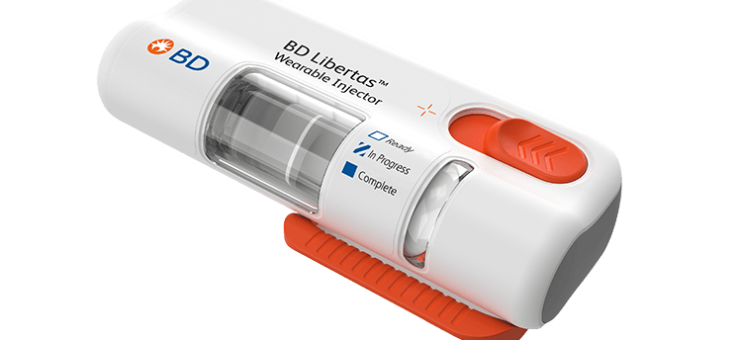The rise of the bolus injector
28 September 2017
Engineers and scientists are working hard to revolutionise the way patients take new and existing drugs.
Many of the new drugs under development are ‘biologics’, which tend to be unsuitable for taking orally (as a pill) because the liver metabolises them. A classic example of a widely-used biologic drug is insulin for diabetes mellitus.
Therefore injection is the most common way of taking biologics.
Some of the biologic drugs, particularly monoclonal antibodies, require large masses to be injected. In order to inject a large drug mass, we have two choices: increase the injection volume, or increase the concentration of drug in the formulation.
Problems with increasing the injection volume
Injecting a large volume requires either:
- A high flow rate, which can be painful and unsightly; or
- A long duration of injection, which can be uncomfortable and difficult to maintain injector position.
In addition, many injection devices are limited to 1 mL volume because:
- Historically many autoinjectors were based on the 1 mL BD Hypak; and
- It is extremely expensive to refit the aseptic filling lines that have been built for 1 mL syringes.
Problems with increasing the drug concentration
Increasing the concentration of the drug in the liquid increases the formulation viscosity, which cannot become too great because:
- Patients are demanding thinner and thinner needles, which strongly increases the resistance to flow and would increase injection duration to unacceptable periods for viscous drugs;
- Injection devices contain typically a glass syringe, which breaks if too much force is used to drive the formulation through the needle; and
- Many drugs, especially those based on proteins, aggregate (stick together) above a certain concentration.
Autoinjectors without glass syringes
There are various autoinjector technologies which do not contain a glass syringe, such as:
- The Crystal Zenith range from West Pharmaceutical Services; and
- The Oval Medical autoinjector.
These autoinjectors may be able to deliver viscous drugs, but still tend to be limited in injection volume due to the discomfort of injecting large volumes quickly and the difficulty in holding the autoinjector steady for long enough.
The bolus injector
The solution may be a different class of injection device: the bolus injector (sometimes called a ‘patch pump’, although this term is also used for ambulatory infusion pumps).
A bolus injector may be described as a device with performance and usage between current autoinjectors and infusion pumps:
- A bolus injector is typically attached to the patient’s body for a few tens of seconds to a few hours, unlike an autoinjector which is held in the hand. Therefore a bolus injector may be able to deliver a larger volume than an autoinjector because it does not need to be manually held in position during injection, and could contain a larger drug reservoir. In addition, avoidance of a glass syringe may enable delivery of more viscous drugs.
- A bolus injector is normally designed to deliver its payload promptly, unlike an infusion pump in which the duration of delivery is a key parameter in the therapy (such as a constant, low flow rate, basal dose of insulin 24 hours per day). The bolus injector is only attached to the patient for the few minutes or hours that it is delivering its dose.
Example bolus injectors
There too many bolus injectors in development to list here but some examples are:
BD is developing the Libertas bolus injector built around a pre-filled BD Neopak syringe.
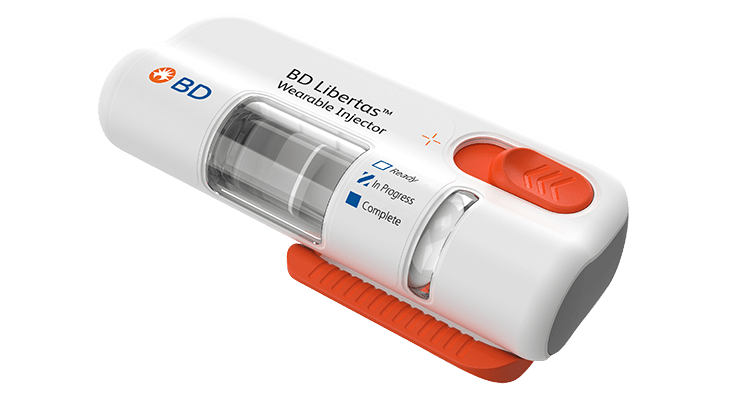
BD Libertas
West has launched the Smart Dose injector for Amgen’s Repatha drug. The device is based on the Crystal Zenith plastic cartridge.
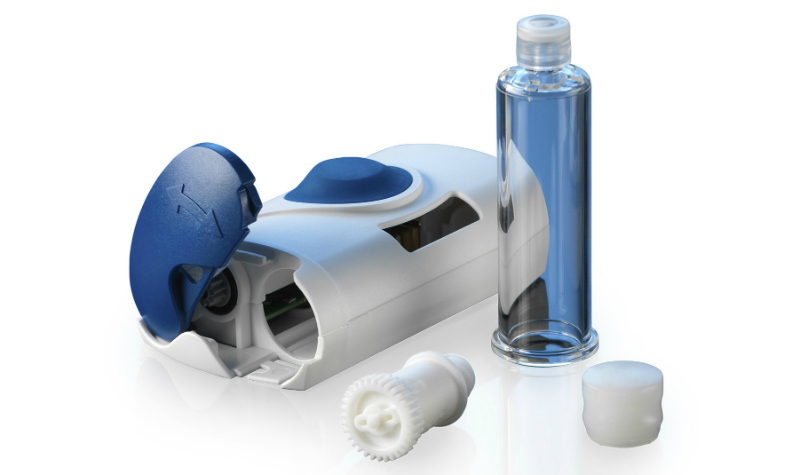
West SmartDose
Enable Injections is working hard on its eponymous device, which takes a different approach to the prefilled devices above: the drug is supplied in a separate vial or syringe, then a filling pump fills the injector with the drug formulation shortly before attaching the injector to the body. This means that the device avoids some of the regulatory hurdle of proving drug stability for many months before use.
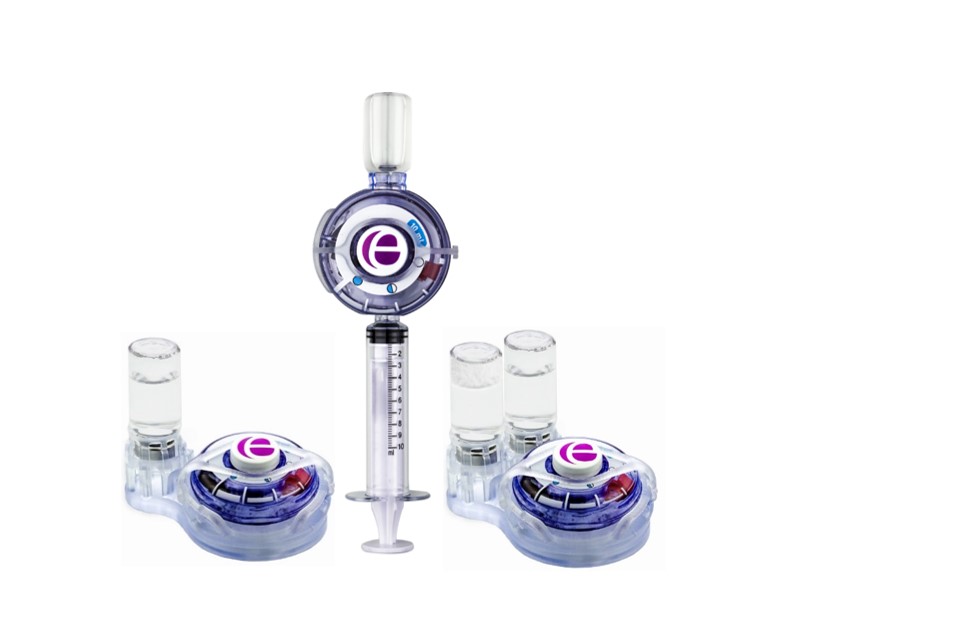
Enable Injections
SteadyMed is developing the ‘PatchPump’ platform which uses an expanding battery to force drug out of a flexible primary drug container.
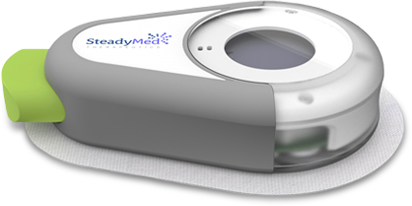
SteadyMed PatchPump (R)
Sensile Medical has various formats of pump based around its core micropump technology.
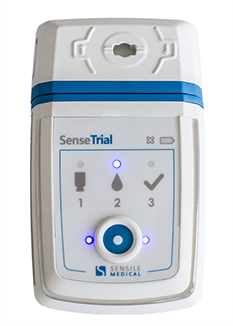
Sensile SenseTrial
Ypsomed is promoting its YpsoDose concept based on 5 mL or 10 mL prefilled glass cartridges.
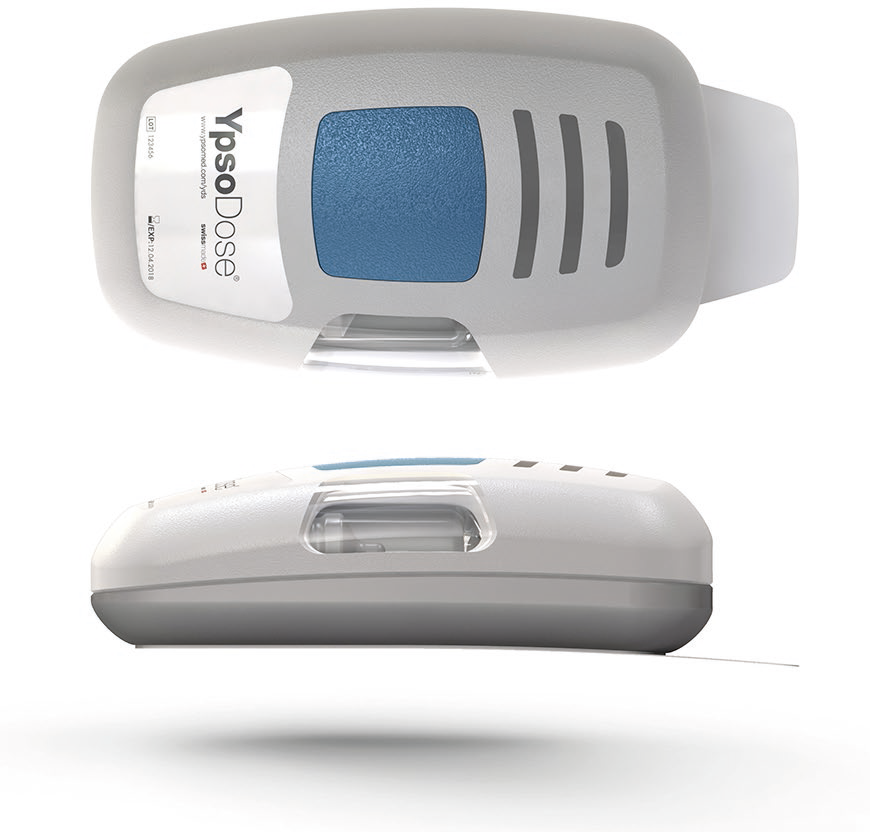
Ypsomed YpsoDose
Bespak has created a prototype demonstrator of a HFA gas-powered bolus injector, called Lapas.
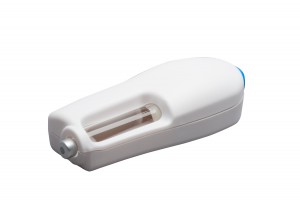
Bespak Lapas
There are many other devices in development, such as the NeuroDerm continuous subcutaneous infusers. Others have been mothballed or cancelled, or otherwise fallen by the wayside such as the Roche Single Injection Device (formerly MyDose), Ratio Drug Delivery’s NuPrivo, and Unilife’s Precision Therapy.
If your organisation is developing a bolus injector and you have recommendations for improving the list above, please get in touch.
Challenges for new bolus injectors
Many bolus injector designs use a novel primary pack, and pharmaceutical companies are very reluctant to risk their drug launch on new materials and designs. Device developers are trying to reduce the risk by using materials that have been used with drugs before.
The second challenge is that a new primary drug container is likely to be incompatible with the pharmaceutical companies’ aseptic filling lines, which are extremely expensive and time-consuming to build and validate.
In addition, some bolus injectors have advanced features such as automatic needle insertion and electronic control which increase development complexity.
Finally, new devices must meet the newly raised regulatory demands on usability (human factors).
The future
The drug delivery device industry is working hard to define the requirements and test methods for acceptable bolus injectors, which is likely to become ISO 11608 part 6.
We expect that bolus injectors will become a familiar part of the drug delivery device space, and that they could enable exciting new therapies such as regenerative medicine.
If you would like to know more about bolus injectors, or have a need to procure or develop one, please get in touch. Springboard develops injection technologies, and conducts technology scouting, technology procurement, due diligence and usability engineering projects for our clients.
Full disclosure: the author has worked on numerous injection device developments for pharmaceutical companies and device manufacturers, and has been asked to attend the meetings to draft ‘ISO 11608-6 Needle-based injection systems for medical use – Requirements and test methods – Part 6: Bolus Injectors’.
This post was originally posted on 19 September 2013 and has been updated since.


